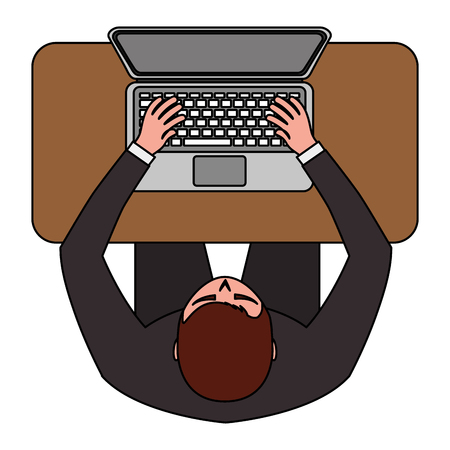The Importance of Regular Breaks at Work
In today’s fast-paced UK work environment, the significance of taking regular, structured breaks cannot be overstated. While many employees might feel pressured to power through their tasks without stopping, both research and workplace regulations highlight the crucial role that breaks play in supporting not only physical but also mental wellbeing. According to the Health and Safety Executive (HSE), employers in the UK are legally obliged under the Working Time Regulations 1998 to ensure workers are entitled to adequate rest periods throughout the working day. These structured breaks help prevent fatigue, reduce stress, and contribute to improved concentration and productivity. In British workplace culture, a “tea break” is more than just a tradition—it is an opportunity to step away from screens, stretch, hydrate, and recharge. By embracing regular pauses within the workday, employees can protect their health, maintain focus, and foster a positive workplace atmosphere where everyone feels valued and supported.
2. Best Types of Healthy Breaks
Taking regular, purposeful breaks during the workday is not just a luxury but a necessity for maintaining good physical wellbeing—especially in British workplaces where sedentary routines are common. Incorporating healthy breaks can boost productivity, reduce fatigue, and support long-term musculoskeletal health. Here’s a rundown of some of the most effective and accessible activities suitable for offices across the UK:
Stretching Sessions
Short stretching routines can help relieve tension built up from sitting at a desk or working at a computer. Simple neck rolls, shoulder shrugs, and gentle back stretches are easy to perform at your workstation and require no special equipment. These activities help prevent repetitive strain injuries, which are common in office environments.
Brisk Walks
Going for a brisk walk—whether it’s around the office building, through a nearby park, or just up and down the stairs—can invigorate both body and mind. Walking increases circulation, boosts energy levels, and provides a mental reset. In many British workplaces, taking a “leg-stretch” is widely accepted and encouraged during tea breaks or lunch.
Ergonomic Exercises
These exercises are designed to counteract the negative effects of prolonged sitting. Movements such as seated leg lifts, wrist rotations, and standing calf raises can be performed even in compact office spaces. Incorporating ergonomic exercises helps maintain posture and supports joint health.
Comparison Table: Popular Healthy Break Activities
| Activity Type | Time Required | Equipment Needed | Benefits |
|---|---|---|---|
| Stretching | 2-5 minutes | None | Reduces muscle tension; improves flexibility |
| Brisk Walk | 5-15 minutes | Comfortable shoes (optional) | Boosts circulation; refreshes mind |
| Ergonomic Exercises | 2-10 minutes | Chair/desk (for support) | Enhances posture; prevents strain injuries |
Cultural Note for UK Workplaces
The tradition of tea breaks in Britain offers an excellent opportunity to blend social interaction with movement. Rather than remaining seated in the kitchen or break room, consider using this time to incorporate one of the above activities. Employers should encourage staff to use these moments proactively—not only for rest but also for physical rejuvenation.

3. Incorporating Healthy Breaks into Your Workday
Taking healthy breaks is more than just a nice-to-have; it’s essential for sustaining both physical and mental wellbeing throughout the workday. In the context of the UK workplace—whether you’re based in an office in Manchester, working remotely from your home in Edinburgh, or splitting time between locations—integrating regular movement and rest requires intentional planning and a bit of creativity.
Structuring Your Day: Tips for All Working Arrangements
Start by mapping out your daily schedule, identifying natural pauses such as mid-morning or mid-afternoon lulls. Set calendar reminders for brief breaks every hour—these can be as short as five minutes but should be non-negotiable. If you’re office-based, use these moments to take a walk around the building, stretch at your desk, or step outside for some fresh air. Those working from home might take advantage of their space to do gentle yoga, refill their water bottle, or simply move between rooms.
Hybrid Working? Plan Ahead
If your week is split between home and office, plan your healthy breaks with each environment in mind. For example, on days in the office, you could coordinate a brisk lunchtime walk with colleagues. When working from home, set up a standing workstation or keep resistance bands nearby for quick exercises.
The Legal Right to Breaks in the UK
Remember, UK employment law entitles most workers to a 20-minute uninterrupted break if the working day exceeds six hours. Make full use of this entitlement by stepping away from screens and engaging in light physical activity or mindful relaxation. Beyond statutory rights, many employers encourage additional micro-breaks to support wellbeing—don’t hesitate to ask about company policies that promote healthy habits.
Staying Accountable
To make healthy breaks a lasting habit, consider using apps or wearable devices to track your movement and prompt reminders. Pair up with a colleague or friend for mutual encouragement—perhaps start a step challenge or share progress on taking regular screen breaks. With a bit of structure and support, incorporating healthy breaks becomes second nature, contributing positively to both individual health and overall workplace culture.
4. Legal Rights and Employer Responsibilities
Understanding the legal framework surrounding work breaks is crucial for both employers and employees in the UK. The Working Time Regulations 1998 (WTR) set out key provisions to ensure that workers are granted adequate rest periods, which are vital for maintaining physical wellbeing during the workday.
Your Statutory Break Entitlements
| Break Type | Entitlement Under WTR |
|---|---|
| Rest Breaks at Work | 20 minutes uninterrupted if working more than 6 hours per day |
| Daily Rest | 11 consecutive hours’ rest in any 24-hour period |
| Weekly Rest | 24 hours without work each week or 48 hours each fortnight |
Employer Responsibilities
- Employers must ensure that workers are able to take their statutory breaks; failure to do so may result in legal consequences.
- Workplace policies should reflect these entitlements clearly and be communicated effectively to all staff members.
- The health, safety, and welfare of employees must be prioritised, especially where job demands are high or tasks are repetitive.
Additional Considerations for Employee Wellbeing
- Certain roles, such as those involving continuous monitoring or safety-critical tasks, may require risk assessments and tailored break arrangements above the minimum statutory requirements.
- Flexible working practices and encouragement of movement or healthy activities during breaks can further support physical wellbeing and meet an employer’s duty of care under broader health and safety laws.
Summary Table: Statutory vs. Enhanced Breaks
| Type of Break | Statutory Minimum | Possible Enhanced Practice |
|---|---|---|
| Lunch/Rest Breaks | 20 minutes (for >6 hour shift) | 30-60 minutes as standard policy, with encouragement for movement or fresh air |
| Microbreaks | No statutory right | Short, frequent pauses encouraged for screen users and manual roles |
By adhering to these legal rights and responsibilities, UK workplaces not only comply with regulation but also foster a healthier, more productive environment that values the wellbeing of every employee.
5. Creating a Positive Workplace Culture Around Breaks
Encouraging Healthy Breaks Without Stigma
In British workplaces, fostering a culture that genuinely supports healthy breaks can significantly improve physical wellbeing and overall job satisfaction. To achieve this, both employers and employees must actively contribute to an environment where taking breaks is the norm rather than an exception.
Strategies for Employers
- Lead by Example: Senior staff and managers should model positive break behaviours by regularly taking their own breaks and encouraging teams to do the same. This helps dispel any unspoken stigma attached to pausing work during the day.
- Create Supportive Policies: Employers can formalise regular break times in workplace policies, making clear that short periods away from desks are not only acceptable but encouraged for health reasons.
- Provide Break Facilities: Invest in comfortable break areas with access to water, fresh air, and spaces conducive to relaxation or light activity. This demonstrates a commitment to employee wellbeing beyond productivity targets.
Strategies for Employees
- Normalise Conversations: Openly discuss the benefits of healthy breaks with colleagues, sharing tips on what works best for individual wellbeing without judgement.
- Respect Colleagues’ Time: Recognise that everyone has different needs; support others’ choices to take breaks at varying times throughout the day.
The Importance of Mutual Respect
Cultivating a stigma-free attitude towards taking breaks requires mutual respect between all levels of staff. Employers should trust their teams to manage their time responsibly, while employees must ensure breaks do not disrupt workflow or team commitments. By working together, British workplaces can create an environment where healthy breaks are valued as essential to both individual health and collective success.
6. Resources and Support for Physical Wellbeing
Taking healthy breaks during the workday is much easier when you know where to turn for support. In the UK, a variety of organisations, digital tools, and local initiatives are dedicated to helping employees prioritise their physical wellbeing.
Useful Organisations
The NHS provides extensive guidance on workplace health, including tips for staying active at your desk and advice on mental and physical wellbeing. The Chartered Institute of Personnel and Development (CIPD) offers resources specifically aimed at employers and HR professionals looking to encourage staff wellbeing. Mind, while primarily focused on mental health, also recognises the role of physical activity in overall wellness.
Apps for Healthy Breaks
There are several UK-friendly apps designed to help workers incorporate movement into their day. Active 10 by Public Health England encourages users to add brisk walking into their routine, while Couch to 5K helps beginners start running with easy-to-follow plans. StretchMinder and Stand Up! are both excellent for reminding you to take short movement or stretching breaks throughout your working hours.
Local Initiatives
Many local councils and community centres across the UK offer free or low-cost fitness classes during lunch hours, from yoga to walking groups. Parkrun is a popular nationwide initiative organising free, weekly 5k runs in public parks—ideal for team participation or solo motivation alike. Additionally, some employers partner with local gyms or leisure centres to provide staff discounts or lunchtime group classes, so it’s worth checking what’s available in your area.
Encouraging a Culture of Wellbeing
Employers can further support healthy breaks by promoting these resources internally, developing workplace policies that allow time for movement, and fostering an environment where taking regular breaks is encouraged rather than frowned upon. Accessing these resources empowers employees to make positive choices that benefit both their immediate energy levels and long-term health.


